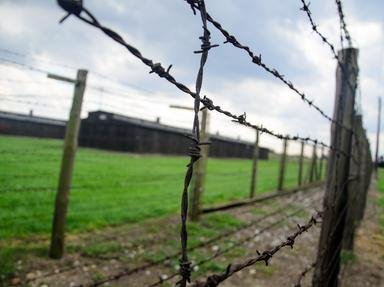Quiz Answer Key and Fun Facts
1. The Jews were fined 1 billion Reichsmarks for the damage caused by the Nazis to Jewish stores and synagogues during Kristallnacht.
2. What event/achievement/action did Mordecai Anielewicz, a Polish Jew, do during World War II?
3. What event was triggered by the actions of a young Polish Jew by the name of Herschel Grynszpan?
4. What was the name of the product most commonly used to gas the Jews at Auschwitz?
5. In 1933 a group of SS soldiers were arrested for killing Jews at the Aschaffenburg concentration camp.
6. What do the camps named Hindenburg, Nordland and Siegfried, have in common?
7. What was the name of the most notorious Gestapo prison camp used between 1933 and 1934?
8. Hermine Braunsteiner was female guard in the Ravensbruck concentration camp from 1941-1942, then moved to the Majdanek. After the war she was convicted of murder for her roles within the concentration camps and spent three years in prison.
What happened after her release?
9. The Giado concentration camp was located in what country?
10. What is generally considered to be the approximate number of Jewish victims murdered by the Nazi s during the Holocaust?
Source: Author
Lssah
This quiz was reviewed by FunTrivia editor
bloomsby before going online.
Any errors found in FunTrivia content are routinely corrected through our feedback system.

